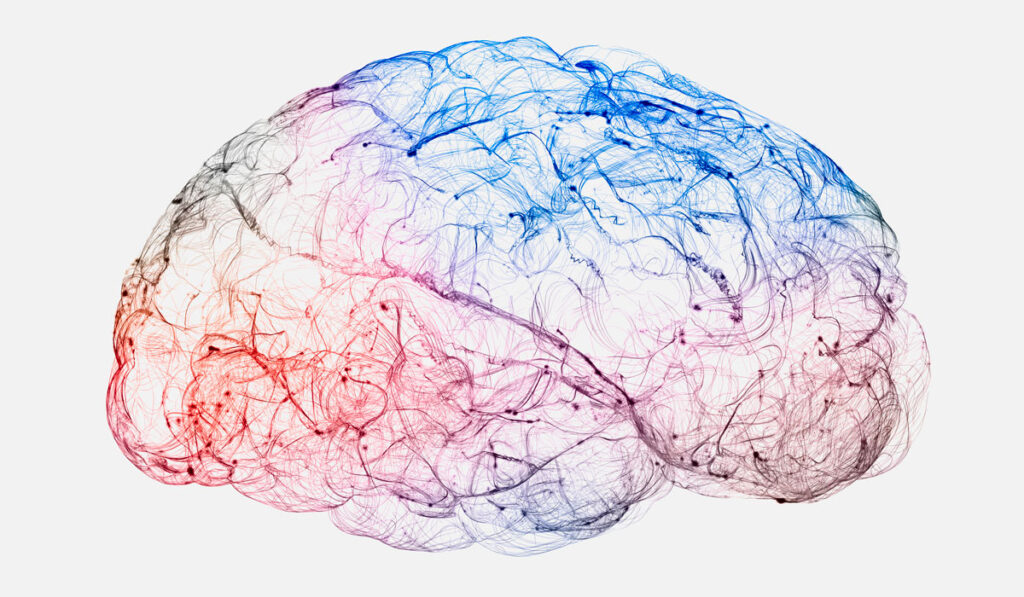Histamine reduces excitatory gain on certain neurons in the nucleus accumbens (NAc) through H3 receptors, according to recent research published in Biological Psychiatry. The findings implicate histamine in responses to stress and suggest histamine signaling within the NAc may offer a novel therapeutic target for stress-related pathologies such as addiction.
“We provide a rigorous assessment of how histamine signaling within the NAc may shift the balance of signal propagation through the reward system,” said Brad Grueter, Ph.D., senior author on the study and an assistant professor in the Department of Anesthesiology at Vanderbilt University Medical Center.
“By understanding the molecular mechanisms acting within the brain we aim to identify novel targets for precision therapeutic treatments to neuropsychiatric disorders.”
A Center Node for Reward Processing
The NAc’s central role makes it an attractive therapeutic target. The brain region integrates inputs from distinct neuro-modulatory systems to coordinate motivated and reward-based behavior, Grueter explained.
“The accumbens serves as a center node for reward processing as it integrates information from several processing units – the hippocampus, the cortex, the amygdala and the thalamus,” he said. “The cells within the accumbens are quiescent, so they don’t fire regularly. It typically takes a lot of excitatory transmission to get these neurons to integrate that information, generate action potentials, and propagate that information to the next node in the pathway.”
While histamine-producing neurons innervate the NAc, little is known about how histamine, a wake-promoting monoamine, contributes to neural circuits within the NAc.
“By understanding the molecular mechanisms acting within the brain we aim to identify novel targets for precision therapeutic treatments to neuropsychiatric disorders.”
Histamine Signaling within the NAc
For their study, Grueter and colleagues including Kevin Manz, Ph.D., a postdoctoral fellow in the Department of Anesthesiology at Vanderbilt, sought to determine whether histamine signaling is capable of regulating circuit function within the NAc, and whether this signaling pathway is recruited by arousal states like acute stress.
Using electrophysiology and optogenetics, the team determined that histamine negatively regulates excitatory gain on medium spiny neurons via the H3 receptor. An animal model of immobilization stress further revealed that acute stress engages histamine signaling in the NAc.
While a direct connection between histamine signaling and behavioral states in humans is beyond the scope of the study, the findings suggest a role for histamine signaling within the NAc in depression, anxiety, addiction and other stress-related pathologies.
Input-specific Inhibition
The study also supports a dual role for histamine in the brain. Grueter’s team determined histamine asymmetrically regulates glutamatergic transmission, with histamine found to strongly inhibit excitatory inputs from the prefrontal cortex (PFC) to the NAc, and only modestly inhibit inputs from the mediodorsal thalamus (MDT) to the NAc.
“Glutamatergic inputs from these regions exert divergent effects on NAc-dependent motivational states, with the PFC supporting reward-related behavioral outcomes and the MDT contributing to negative emotional valence,” the authors wrote.
Said Grueter, “The PFC is critical for higher executive function. By suppressing excitatory drive from the MDT, histamine amplifies the contribution of cortical information processing through the NAc.”
A New Therapeutic Angle
Targeting histamine may be a new approach to modulating mechanisms of arousal in the brain, Grueter explained.
“Targeting serotonin, norepinephrine and dopamine is getting pretty exhausted,” he said. “One of the big questions is – since histamine signals in such a different manner than those substances – does it provide a different therapeutic angle for the treatment of addiction and other stress-related pathologies?”
Ongoing research from Grueter and colleagues is diving further into the role of histamine in integrating information within the NAc. “We are next looking at the role of histamine in neural microcircuits,” Grueter said. “There are really a lot of intricate details going on.”





